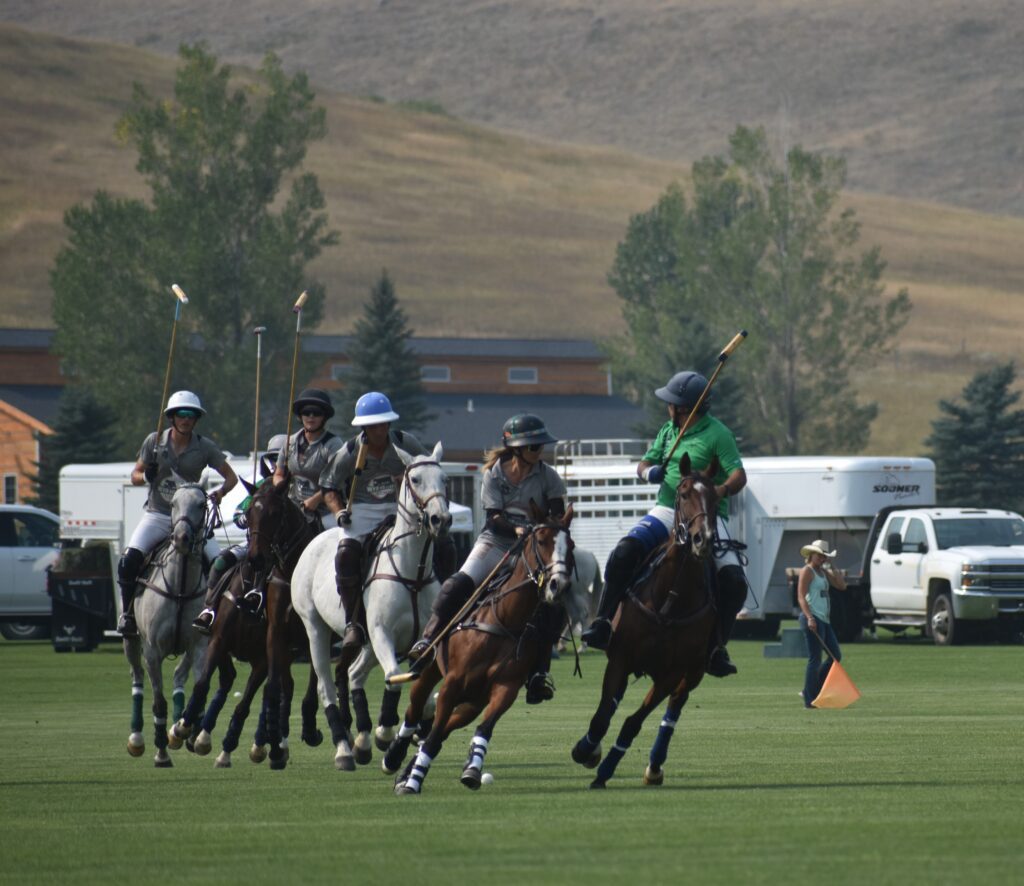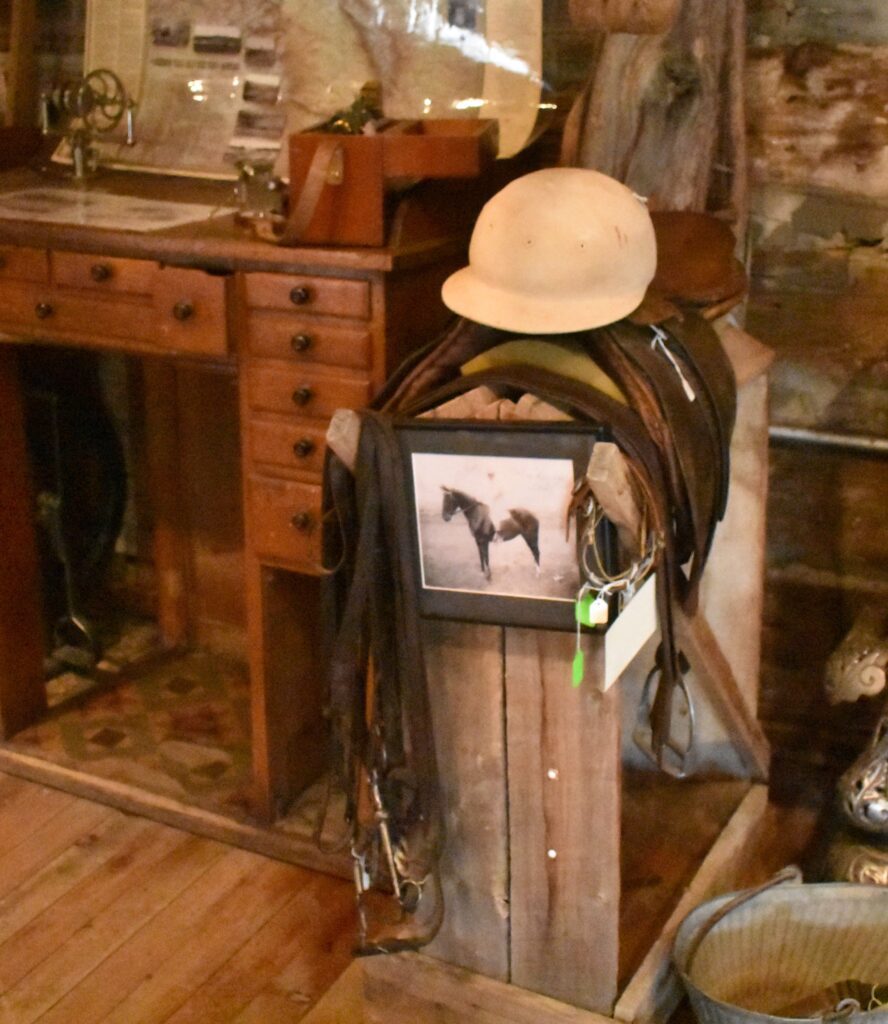News
History of Polo

With Don King Days Happening this coming weekend, September 3 and 4th, and spectators can watch polo games as well as bronc riding and steer roping, so this week the history column will look polo in the area.
Polo is an ancient equestrian game and was called “The Sport of Kings”. Variants of the game have existed since the 6th century B.C. and was played by Iranian and Turkish peoples.
The modern game was derived from the form played in India, and British soldiers in India brought the game to the west. Soldiers in the cavalry used polo to develop them and their horses.
This from the Deaver Sentential, Deaver Wyoming, Saturday, January 31, 1920 –Army Is to Play Polo, the Next Thing to Real War! Appears that the army is going in for polo. Polo Is quite a game; it is about the nearest thing to war obtainable in times of peace. The war department authorizes publication of an announcement by the office of the chief of staff, which says among other things: It is the desire of the war department that polo should be one of the games to be encouraged and developed throughout the army.
To accomplish the aims for which this game is fostered in the service, namely, the development of horsemanship, skill and daring on the part of officers and enlisted men, commanding officers will utilize all means at their command to further the interests of this sport. It is especially desired that teams be developed and maintained at the several division camps and at training centers and regimental posts.
A central polo committee has been established in the war department. This committee will co-ordinate all matters pertaining to polo activities throughout the army. It will secure any assistance possible for the furtherance of the game, and will co-ordinate relations between polo in the service and the American Polo Association.
Organizations desiring to take up polo are empowered to use regulation mounts of their authorized quota for this purpose. Regulation mounts of the necessary speed and hardiness will be furnished such organization as a part of their quota on requisition made to appropriate remount officer.
To units developing teams will be issued on requisition the necessary polo equipment, including saddles, sticks, balls, etc. Instructions governing participation in match and tournament play, the training and use of horses and the requisition and care of equipment will be issued from the war department.
Many Army Posts had polo teams, including Fort Robinson in Nebraska and Fort Russel near Cheyenne, Wyoming. However, there were many other civilian teams organized in the state.

From Semi-Weekly Boomerang, July 15, 1895 – The Boomerang has already announced that an effort would be made next week in accordance with the call published in these columns, to organize a polo club. A. W. Whitehouse and Percy Lamb are among the prime movers in the formation of the club. There is no reason why Laramie should not be one of the centers of this best of games. The two essentials— fast, handy ponies and bold, determined horsemen, are here in abundance. The selection of a ground will be difficult only because there is so much suitable land. If the game be once started it is sure of a lasting popularity.
To those who have never seen the game a few words of explanation may be necessary. On a level piece of ground between three and four hundred yards long by about half as wide, two four-man teams, mounted on ponies, take up their positions. The men are armed with long, light mallets. A ball is thrown to them. At each end of the ground are two posts, eight yards apart. The object of the game is to drive the ball between the posts defended by the opposing team. Each time this is done one point, or goal, is secured.
After one hour’s play the match is won by the team scoring the greatest number of goals. Stringent rules prevent the players from galloping recklessly into or across one another.
Though of course first-class horsemanship is a great advantage, still, a moderate rider who is good at other games of ball may develop into a very excellent player, if he begin on handy and reliable ponies. Every cow pony that turns perfectly to the left and right, stops and starts quickly, and has been roped off, will make a good practice pony after one or two lessons.
Hard-mouthed, runaway ponies that have been spoiled by racing ought not to be allowed on the ground. They are dangerous to their riders and still more so to the other players. In Europe, in India, and in the eastern states the game is expensive and confined to very wealthy men. There it is the one ambition of most young horsemen to be rich enough to play. Here the game can be enjoyed for next to nothing. The difference lies partly in the low price of horseflesh, and partly in the fact that grass-fed ponies (not played too long or too often) are very nearly equal to those groomed and fed on grain. Polo ought to be in full swing here in a very few weeks.
This was from a much longer article in The Sheridan Post, February 6, 1917 – Sheridan should have some form of summer entertainment. She owes it to herself to attract visitors here; she owes it to the people of the Sheridan country who, by their trade, help to make possible the growth and prosperity of a city here. So the suggestion is here offered, for what it is worth, that Sheridan substitute for the annual Stampede an annual Polo Tournament. That may sound like a poor substitute at first mention. But is it? Sheridan now enjoys the distinction of being the polo center of the Rocky Mountain states. Few Sheridan people realize that, but it is a fact. Sheridan county has, every summer, more active, playing polo teams than any other community in the United States.
Could not Sheridan become. In a few years, the summer home of polo, just as Coronado has become the winter home.

Polo did become a summer sport in the Sheridan area, and Big Horn has always been the polo capital in Sheridan County.
The Sheridan Enterprise, September 24, 1916 – Annual Polo Tournament Opens At Polo Ranch This Afternoon The third annual polo tournament will be held at the Polo Ranch this afternoon, interest in the event is great, indicating a large attendance in response to the invitation given by Mr. Moncreiffe. and the association to the people of Sheridan and vicinity to be present. The ground is in excellent condition. The ponies are in fine condition as the result of several weeks’ hard practice and the players are very fit, indicating that both games of the tournament will be fast and spirited. Three teams will participate, the McCoy ranch team, the Polo ranch team. and the Walsh Wasps. They will compete for the possession of the Wyoming Challenge cup, which is now held by the Polo ranch team and will become its property if won again this year. Today’s game will be played by the Polo ranch team and the Walsh Wasps. Malcolm Moncreiffe is captain of the Polo team and J. W. Wilson, Jr., Fred Skinner and Luther Barker are the other members. The members of the Wasps are R. H. Walsh, captain, John Cover, Goelet Gallatin and Floyd Bard.
Moncreiffe not only played polo, but he raised fine polo ponies on his Big Horn Ranch. From The Sheridan Post, September 30, 1903 – Malcolm Moncreiffe’s Polo Ranch. Malcolm Moncreiffe had not been in the country very many years before his love of sport and keen business foresight prompted him to purchase ranch of 2100 acres and establish upon it the most unique industry on the American continent, training school for polo ponies. These ponies were then, as they are now, in great demand in the English market.
Long before this time, when dealing chiefly with cattle, the cowboy and the festive broncho, Mr. Moncreiffe discovered that the horse produced in this section had all the qualifications possessed by good polo ponies, lie and his ancestors had been subject to ail the rigors of the long, cold winters, and the immutable law of the “survival of the fittest,” therefore he was hardy animal. The grass growing upon the limestone soil of the northern Wyoming range contained the very elements necessary to make strong bones, very important in the make up of polo pony. The high altitude gave him strong lungs, while his association with the cowboy and perhaps other things which cannot be enumerated, gave him the necessary cunning.
Of course the undertaking was a success, and for eight years he has been annually training and shipping polo horses to England. These ponies are perhaps regarded by the British as little inferior to the pony produced in England and Ireland, but are admitted to be the best of all imported ponies. It is fact, however, that Mr. Buckmaster the crack polo player of England, rides an American pony, which is conceded to be the best pony that ever chased a ball, not excepting even the famous “Maltese Cat,” so aptly described by Rudyard Kipling. (The Maltese Cat is a story about a polo pony by Kipling, told from the point of view of a polo pony, “The Maltese Cat”)

Notwithstanding the experience and superior judgment of Malcolm Moncreiffe and his four expert polo men in selecting ponies, about 25 per cent, of those selected fail to become polo players. The ideal polo pony is about 14 ½ hands high, well built, fast, and capable of enduring hard work.
The course of training at this horse school is two or three seasons, according to the intelligence of the animal, but usually they are ready to go to market at the end of the second season, after having engaged in many matched and skillful games. Every fall 24 of these trained polo ponies are shipped to England, where, after wintering and becoming somewhat acclimated, they are put into game, and prospective buyers invited to be present.
Here they make their selections, and pay from $350 to $1,000 per head for the Moncreiffe horses. Although Mr. M. has never made any attempt to dispose of polo horses in this country, he sold ten head in Buffalo, N.Y. last year, and the growing popularity of the game in America promises to make good home market for the entire product of unique industry.

Today, Polo is played during the summer at the Big Horn Equestrian Center and the Flying H Polo Club fields. The summer season culminates with the largest polo tournament of the Big Horn Polo Club season being at Don King Days, held over Labor Day at Big Horn, with the Don King Day’s Cup being played on Monday.

